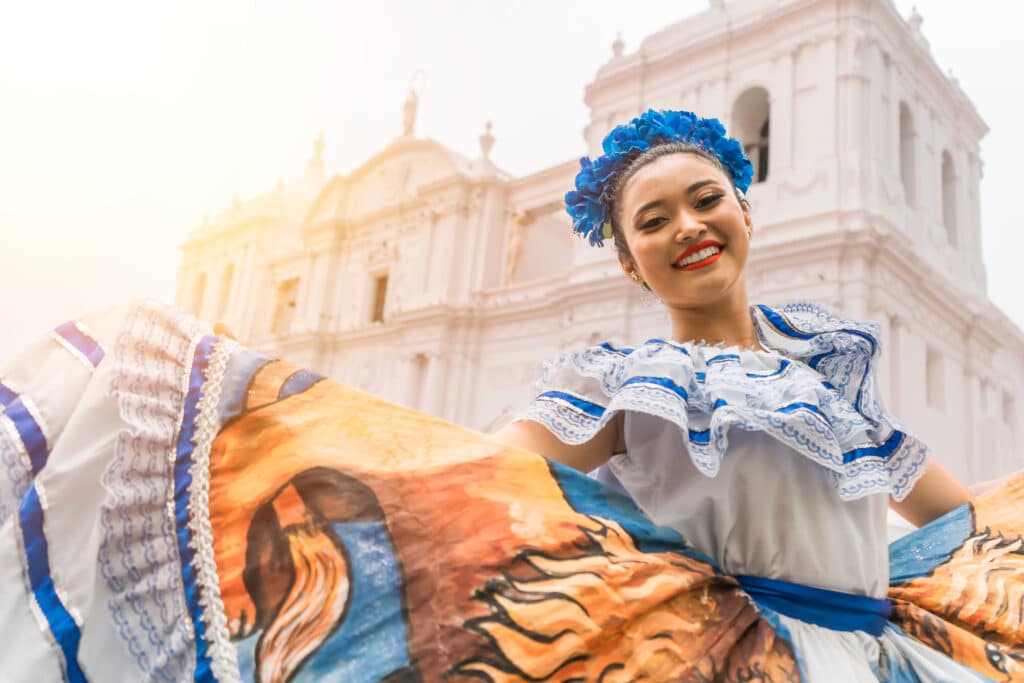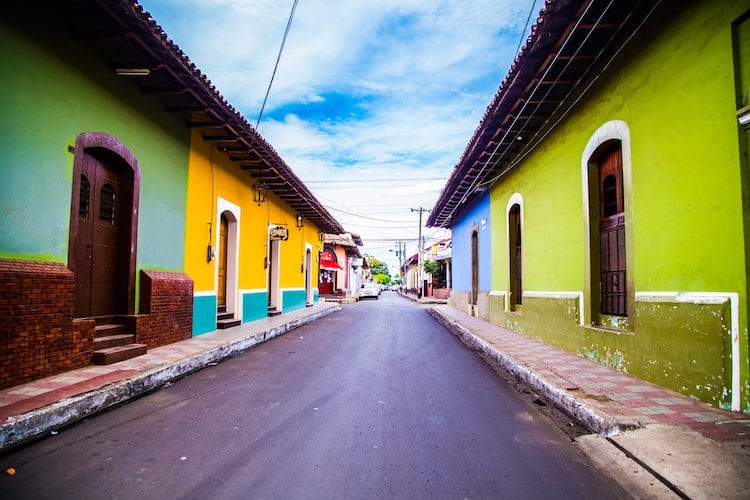If you’re planning a trip to Nicaragua or making an international move there, knowing about the national currency and how to obtain and use it is important. This guide to the currency of Nicaragua created by our team at Remitly will introduce you to the coins and banknotes in circulation, give you a brief history of the currency, and discuss the Nicaragua exchange rate. Plus, we’ll give you tips on how to get Nicaraguan currency safely once you’re in the country.
What is the currency in Nicaragua?
The currency of Nicaragua is the cordoba. Nicaraguan money gets its name from Francisco Hernández de Córdoba, the country’s colonial-era founder.
Centavos are the subunits of cordobas. There are 100 centavos in one cordoba.
The Banco Central de Nicaragua (CBN) oversees the currency for Nicaragua. Its job is to produce banknotes and coins and to manage official payments on behalf of the country.
On currency exchanges, the currency code “NIO” represents the Nicaraguan cordoba. The currency symbol is C$, and to write out amounts of money, you place the code directly in front of the amount. For example, to put forty cordobas in digits, you would write C$40.
As of May 2023, the following are the current Nicaragua currency banknotes in circulation:
- C$10: A green polymer bill with Puerto Salvador Allende on Lake Managua on the front and an image of a woman performing a folk dance called the dance of the vaquita on the back. A palm tree appears in a security window on the front of the bill.
- C$20: An orange polymer bill with the Moravian Church in Laguna de Perlas on the front and an image depicting people performing a folk dance called the Palo de Mayo on the back. The security window shows a sea turtle.
- C$50: A purple polymer bill with the Masaya craft market on the front and an image of people performing a folk dance called the Ballet Folklorico on the back. The security window displays a marimba musical instrument commonly used in Masaya’s folk music.
- C$100: A blue polymer bill with the Granada Cathedral on the front and an image of a horse carriage on the back. The security window features a drum called the atabal, which is often used in the folk music of Granada.
- C$200: A red polymer bill with the Rubén Darío National Theater on the front and actors performing a satirical play called the “El Güegüense” on the back. A guardabarranco, the national bird of Nicaragua, appears in the security window.
- C$500: A red bill with the Cathedral of León on the front and the Momotombo Volcano on the back. The image in the security window is a Flor de Sacuanjoche, the national flower of Nicaragua. Until 2019, this banknote was paper, but in 2019, the CBN began printing it on polymer.
- C$1000: A dark green bill with Hacienda San Jacinto on the front and an image of the Castle of the Immaculate Conception and the San Juan River on the back. A Madroño tree stands out on the security window. Like the C$500, the C$1000 was a paper bill until 2019. New bills are polymer.

In Nicaragua, money also includes coins. The following are the most current coins in circulation in the country:
- 5 centavos: A copper-plated steel coin with a smooth edge
- 10 centavos: An aluminum coin with a smooth edge
- 25 centavos: A brass-plated steel coin with a fluted edge
- 50 centavos: A nickel-plated steel coin with a grooved edge
- C$1: A nickel-plated steel coin with a grooved edge
- C$5: A nickel-plated steel coin with a grooved edge
- C$10: A brass-plated steel coin with a dotted edge
Most of the coins in the latest series produced by the CBN show their denomination on one side and a picture of a pyramid on the other. The exception is the C$10, which depicts Andrés Castro Estrada, a farmer and soldier who became a hero at the Battle of San Jacinto in 1856.
A brief history of Nicaraguan currency
The cordoba’s history dates back more than 100 years. When the Spanish arrived in Nicaragua in 1502, they brought their coins, and Nicaraguans began using them to buy and sell goods. Even after the country permanently gained independence from Spain in 1838, the country lacked a national currency.
In 1858, the León market began issuing coins for people to use while shopping there, but a national currency didn’t emerge until 1878. The peso was the basis for this first national Nicaraguan money, the Billetes del Tesoro.
The CBN created the cordoba currency system in 1912. After a period of inflation, the CBN revamped the currency system, releasing the cordoba nuevo in 1990. The new cordoba was equal in value to one US dollar.
When inflation persisted, the CBN again modified the Nicaragua currency system, this time to its current form. The process began in 1992 and involved reducing the value of the cordoba compared to the US dollar.
In 2015, the CBN unveiled new banknotes. They began to print most denominations on polymer to discourage counterfeiting and launched the current designs for Nicaraguan bills.
The current Nicaraguan banknotes display beautiful artwork, and their design has received rave reviews from those who study money. In fact, the cordoba won the 2016 Regional Banknote of the Year Award at the High Security Printing Latin America Conference in Mexico City, Mexico.
To further increase security, the CBN began printing the remaining paper bills, the C$500 and C$1000, on polymer in 2019. At that time, they also released a commemorative C$1000 bill in honor of the 100-year anniversary of the death of Nicaraguan poet Rubén Darío.
Exchange rates and conversion
The Nicaraguan exchange rate can vary from day to day. As of May 24, 2023, the exchange rate for cordoba to USD was roughly 0.027331826. In other words, one cordoba was worth around 2 cents in U.S. dollars.
If you need to convert Nicaraguan currency to USD or send money to or from Nicaragua, comparing rates from various providers is important. Researching in advance will help ensure you get the best exchange rates when converting Nicaragua currency to USD or vice versa.
Check out our article on how to get the best exchange rates when you send money internationally to learn more.
5 facts about using the currency in Nicaragua
If you’ll be spending time in Nicaragua for business or pleasure travel or are moving there, knowing where to get currency and how to use it will simplify making purchases. Here are some facts that you need to know before you go.
1. Most money exchange services only accept US dollars
Most money exchanges in Nicaragua will only convert USD to cordobas. Euros, British pounds, and currency from neighboring Central American countries usually can’t be converted in Nicaragua. As a result, you should plan to exchange your national currency for USD before you travel if you’re from outside the U.S.
2. Checking credentials before using an exchange is important
While there are many reputable money exchange services in Nicaragua, some people prey on tourists, offering counterfeit banknotes, charging high fees, or providing a low rate compared to the going currency exchange rate in Nicaragua.
To protect yourself, only do business with money changers located outside of major banks. These individuals will be able to show identification to verify that they work for a financial institution. Avoid dealing with independent money exchangers who don’t have these credentials.

3. ATMs can be a good source for obtaining cordobas
ATMs are common in major cities and beginning to appear in more rural areas of Nicaragua. At many ATMs, you can withdraw cordobas or U.S. dollars. Some ATMs also allow you to take cash advances from Visa and MasterCard credit cards. The ones that do will have MasterCard and Visa logos on them.
For safety, choose ATMs in public places. If you’re withdrawing at night, look for a well-lit location.
4. Debit and credit cards can be a good alternative to cash
In major cities, many merchants accept Visa and MasterCard credit cards and debit cards that are a part of the Visa or MasterCard networks. If you plan to use your card while in Nicaragua, let your credit card company or bank know beforehand.
Also, ask about any international usage fees you may be subject to when purchasing in Nicaragua. You will likely also be assessed a currency conversion fee when you buy things in cordobas.
5. You can use USD to pay for many things
Although the cordoba is the official currency of Nicaragua, hotels, restaurants, and merchants in major cities often accept U.S. dollars for purchases. Still, you should plan to exchange some currency for cordobas in case you end up in a place that doesn’t take USD.
Sending money to Nicaragua
We are here to help you send money to Nicaragua. With Remitly, you can send U.S. dollars to your loved ones in Nicaragua, and they will receive in USD.
Visit the homepage, download our app, or check out our Help Center to get started.
